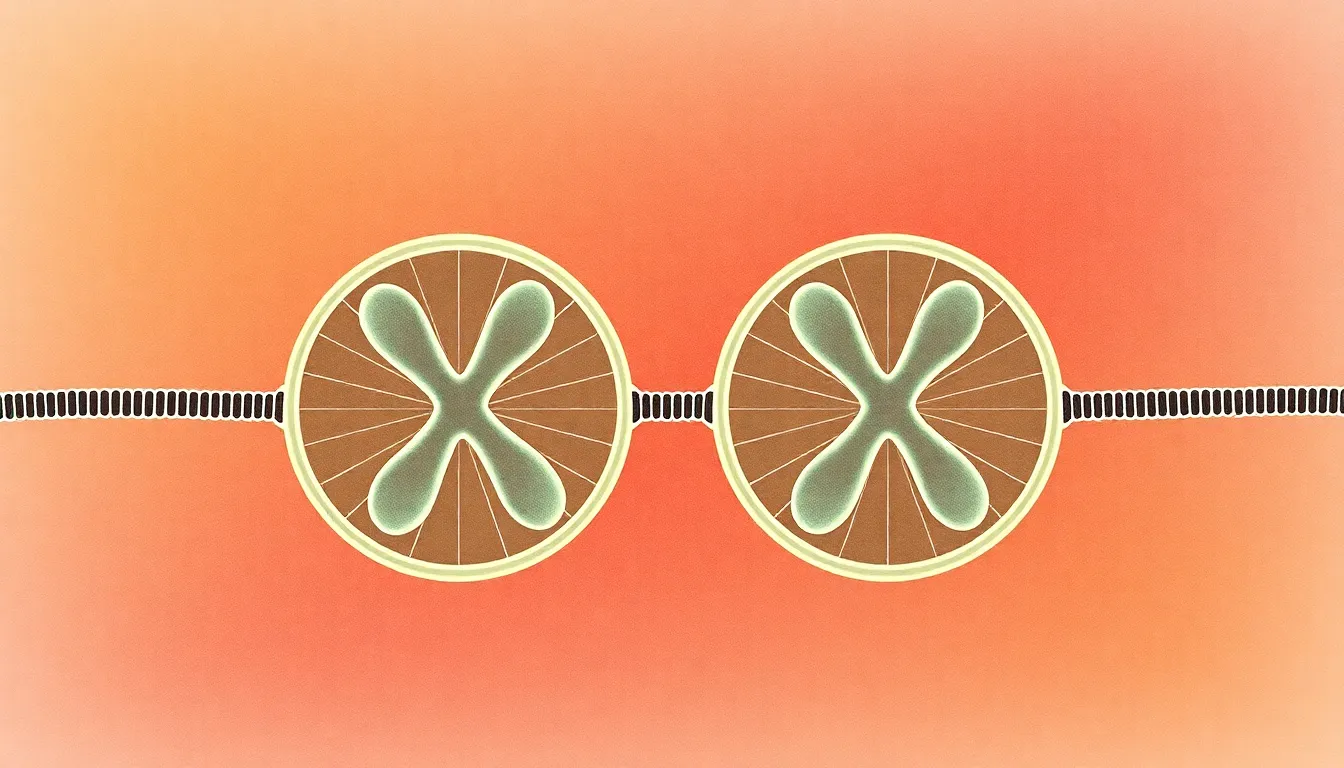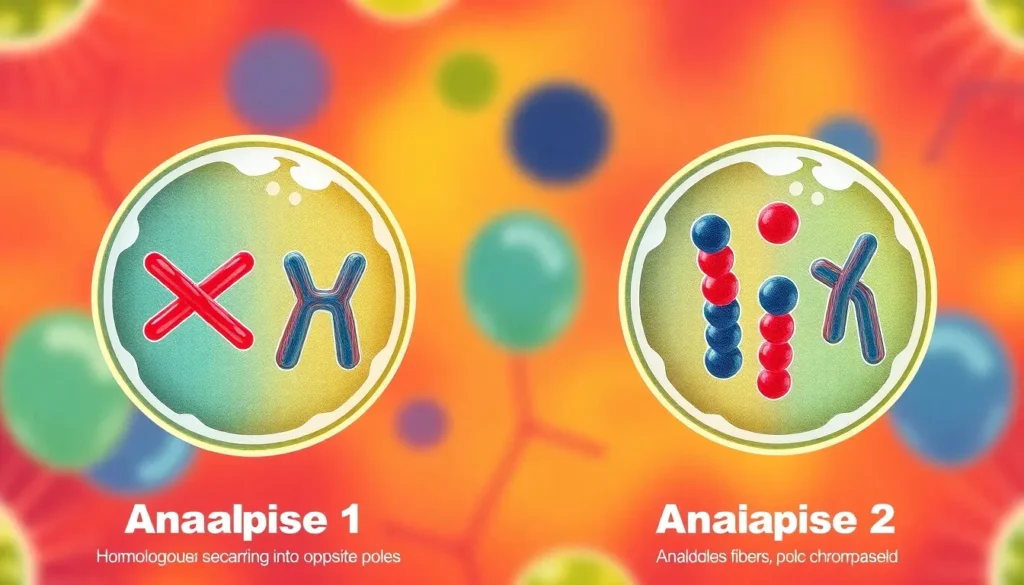Table of Contents
ToggleIn the grand theater of cell division, anaphase takes center stage, showcasing two distinct acts: Anaphase 1 and Anaphase 2. While both may seem like they’re performing the same dance, they each have their unique moves that play a crucial role in the biological ballet of meiosis and mitosis. Understanding the differences between these two phases can make anyone feel like a cellular connoisseur, ready to impress at the next science trivia night.
Overview of Cell Division
Cell division consists of two main processes: mitosis and meiosis. Mitosis results in two identical daughter cells, whereas meiosis produces four genetically diverse gametes. Each process involves distinct stages, including anaphase, which plays a crucial role in chromosome separation.
During anaphase 1, homologous chromosomes separate and migrate toward opposite poles of the cell. This phase ensures genetic diversity by allowing independent assortment of chromosomes. Specific proteins, like cohesins, help in this process by holding sister chromatids together until they are ready to separate.
In contrast, anaphase 2 occurs during meiosis II and involves the separation of sister chromatids. These chromatids, having already undergone genetic recombination in previous meiosis stages, ensure unique genetic profiles in the resulting gametes. The breakdown of cohesin proteins at this stage allows chromatids to move towards opposite poles.
Understanding these phases highlights key functions in genetic variability. Proper chromosome segregation is critical for maintaining accurate genetic information across generations. Without these processes, cells would face developmental issues or diseases, emphasizing the importance of cell division in life.
Anaphase 1

Anaphase 1 marks a crucial stage in meiosis, where genetic diversity begins to take shape. During this phase, homologous chromosomes separate and move to opposite poles of the cell. Proteins called cohesins hold sister chromatids together until the right moment for separation arrives. Each chromosome consists of two sister chromatids, ensuring that genetic material is equally distributed during cell division.
Characteristics of Anaphase 1
Distinct features define Anaphase 1 from other phases. Chromosomes are in their replicated state, presenting as X-shaped structures. Cells experience a reduction in chromosome number, halving from diploid to haploid. Independent assortment plays a vital role, as the way one pair of chromosomes aligns does not affect another. Cytoskeletal elements, including spindle fibers, participate actively in the movement of chromosomes toward poles.
Significance in Meiosis
Anaphase 1 contributes significantly to the formation of gametes. This phase enhances genetic variability through independent assortment, leading to diverse combinations of alleles. Each gamete produced contains a unique genetic profile, a result of the way chromosomes segregate. Errors during this phase can lead to aneuploidy, which disrupts normal development and leads to genetic disorders. Understanding Anaphase 1’s function underscores its importance in successful reproduction and genetic diversity.
Anaphase 2
Anaphase 2 is a crucial stage in cell division, particularly in meiosis. This phase focuses on the separation of sister chromatids, ensuring that each gamete receives the correct number of chromosomes.
Characteristics of Anaphase 2
During Anaphase 2, sister chromatids are pulled apart toward opposite poles of the cell. Cohesin proteins break down, allowing chromatids to separate efficiently. Chromosomes appear as distinct entities rather than X-shaped structures. Each chromatid that moves toward the poles becomes an independent chromosome. Also, the spindle fibers play an essential role in this dynamic process, facilitating movement and ensuring accurate segregation.
Role in Meiosis
In meiosis, Anaphase 2 significantly contributes to generating diverse gametes. Chromatids, having undergone genetic recombination, provide unique genetic profiles. This separation enhances genetic variability among offspring. Proper functioning during this phase is essential; errors can lead to aneuploidy, resulting in genetic disorders. By ensuring correct chromosomal distribution, Anaphase 2 supports the maintenance of genetic integrity across generations.
Anaphase 1 vs Anaphase 2
Anaphase 1 and Anaphase 2 represent critical processes in cell division, differing significantly in their functions and mechanisms. Each phase contributes to the overall goal of genetic diversity.
Key Differences
Anaphase 1 features the separation of homologous chromosomes, reducing the chromosome number from diploid to haploid. Cohesin proteins keep sister chromatids together until anaphase onset. During this phase, chromosomes appear as X-shaped structures. In contrast, Anaphase 2 separates sister chromatids that have undergone recombination. This phase maintains the haploid state while ensuring unique genetic profiles. In this case, cohesin proteins break down, allowing chromatids to move independently toward opposite poles. Chromosomes appear distinctly rather than as X-shaped figures in Anaphase 2.
Similarities Between Anaphase 1 and Anaphase 2
Both Anaphase 1 and Anaphase 2 are essential in the overall process of cell division. Each phase utilizes spindle fibers to facilitate chromosome movement toward poles. Proper functioning in both stages is vital for accurate chromosome segregation. Furthermore, errors in either phase can lead to aneuploidy and resulting genetic disorders. Both phases contribute to enhancing genetic variability and ensure that the resulting gametes possess distinct genetic identities.
Anaphase 1 and Anaphase 2 are vital stages of cell division that serve distinct purposes in meiosis and mitosis. While Anaphase 1 focuses on separating homologous chromosomes to enhance genetic diversity, Anaphase 2 emphasizes the separation of sister chromatids to ensure accurate gamete formation. Understanding these differences not only clarifies the processes of cell division but also underscores the importance of precise chromosome segregation. Errors during either phase can lead to serious genetic disorders, highlighting the critical nature of these cellular mechanisms in maintaining genetic integrity across generations.





